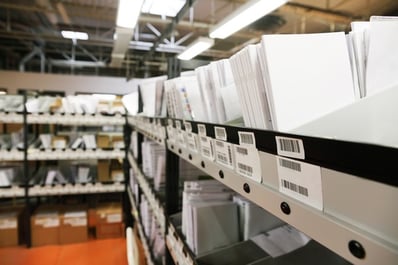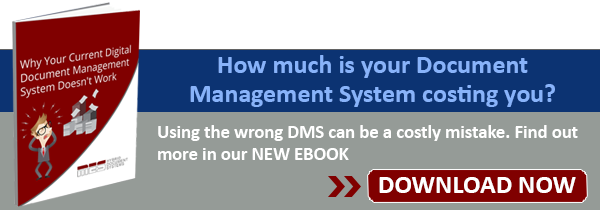 For many businesses, the time and money needed to be invested into updating their file management system is perceived to be too great. Software, document conversion, training and other aspects are deemed too time-consuming or too complicated.
For many businesses, the time and money needed to be invested into updating their file management system is perceived to be too great. Software, document conversion, training and other aspects are deemed too time-consuming or too complicated.
However, what many organizations fail to realize is what their current process of physical, paper file storage is actually costing them. Here are some of the real costs of document storage:
Upfront costs
Have you ever stopped to consider the upfront costs of data storage? Here’s some food for thought: the average four drawer filing cabinet costs $20,000 to fill!
Not only are big, clunky filing cabinets taking up valuable real estate within the office, as your paper output increases the need for additional filing cabinets needlessly drive up costs.
Time
Time is literally money when it comes to file storage and document management. On average, an office worker will spend a startling 40 per cent of their time looking for the information they need to do their job. This means that in a standard 40 hour work week, 16 hours are spent searching for documents rather than focusing on role critical tasks.
Since you can’t easily organize or index a paper file storage system, searching for a document you need can become needlessly difficult. Even a simple error can significantly increase the time it takes to find the right information. In fact, misplaced files can take hours to days to locate, depending on the volume of paper files. The bottom line is, the more time it takes to locate documents, the more your office document storage costs start to add up.
Misplaced files
Believe it or not, the average cost associated with misplacing a single file is $120. Since paper files tend to pass through many hands, they are more likely to go missing as the move from person to person or forgotten on someone’s desk. Physical paper file storage systems are also prone to human error, leading to misfiled documents and increased document storage costs.
Ongoing costs
Paper file storage also comes with a number of ongoing costs required to manage the system and keep it up to date. When you take into consideration printing, office supplies and the cost of new filing cabinets, the cost of document storage continues to grow. The higher the volume of paper files, the higher these costs run.
Data-sharing
Physical files can harm productivity because they can only be used by one person at any time. There is no room for data sharing, meaning two people who need the same file cannot work simultaneously. Furthermore, the physical nature of files means that employees who are on the road or otherwise working remotely are not able to access the information they need to do their jobs effectively. The lack of data-sharing capabilities affects productivity, which hurts your bottom line.
All things considered, the costs of paper file storage make it one of the more expensive – and least productive – file storage solutions. Thus, transitioning to a new document management system for your business may be more economical than initially thought.

